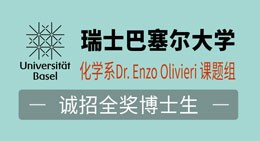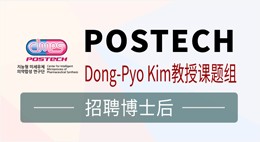Our official English website, www.x-mol.net, welcomes your
feedback! (Note: you will need to create a separate account there.)
2-Phenyl-4,4,5,5-tetramethylimidazoline-1-oxyl 3-oxide Radical (PTIO•) Trapping Activity and Mechanisms of 16 Phenolic Xanthones.
Molecules ( IF 4.2 ) Pub Date : 2018-07-13 , DOI: 10.3390/molecules23071692
Xican Li 1, 2 , Ban Chen 1, 2 , Xiaojun Zhao 1, 2 , Dongfeng Chen 3, 4
Molecules ( IF 4.2 ) Pub Date : 2018-07-13 , DOI: 10.3390/molecules23071692
Xican Li 1, 2 , Ban Chen 1, 2 , Xiaojun Zhao 1, 2 , Dongfeng Chen 3, 4
Affiliation
This study used the 2-phenyl-4,4,5,5-tetramethylimidazoline-1-oxyl 3-oxide radical (PTIO•) trapping model to study the antioxidant activities of 16 natural xanthones in aqueous solution, including garcinone C, γ-mangostin, subelliptenone G, mangiferin, 1,6,7-trihydroxy-xanthone, 1,2,5-trihydroxyxanthone, 1,5,6-trihydroxyxanthone, norathyriol, 1,3,5,6-tetrahydroxy-xanthone, isojacareubin, 1,3,5,8-tetrahydroxyxanthone, isomangiferin, 2-hydroxyxanthone, 7-O-methylmangiferin, neomangiferin, and lancerin. It was observed that most of the 16 xanthones could scavenge the PTIO• radical in a dose-dependent manner at pH 4.5 and 7.4. Among them, 12 xanthones of the para-di-OHs (or ortho-di-OHs) type always exhibited lower half maximal inhibitory concentration (IC50) values than those not of the para-di-OHs (or ortho-di-OHs) type. Ultra-performance liquid chromatography coupled with electrospray ionization quadrupole time-of-flight tandem mass spectrometry (UPLC-ESI-Q-TOF-MS/MS) analysis revealed that most of these xanthones gave xanthone-xanthone dimers after incubation with PTIO•, except for neomangiferin. Based on these data, we concluded that the antioxidant activity of phenolic xanthone may be mediated by electron-transfer (ET) plus H⁺-transfer mechanisms. Through these mechanisms, some xanthones can further dimerize unless they bear huge substituents with steric hindrance. Four substituent types (i.e., para-di-OHs, 5,6-di-OHs, 6,7-di-OHs, and 7,8-di-OHs) dominate the antioxidant activity of phenolic xanthones, while other substituents (including isoprenyl and 3-hydroxy-3-methylbutyl substituents) play a minor role as long as they do not break the above four types.
中文翻译:

16种酚类氧杂蒽的2-苯基-4,4,5,5-四甲基咪唑啉-1-氧基3-氧化物自由基(PTIO•)的俘获活性和机理。
本研究使用2-苯基-4,4,5,5-四甲基咪唑啉-1-氧基3-氧化物自由基(PTIO•)捕集模型研究了16种天然黄嘌呤在水溶液中的抗氧化活性,其中包括藤黄酮C,γ-芒果,subelliptenone G,芒果苷,1,6,7-三羟基-吨酮,1,2,5-三羟基th吨酮,1,5,6-三羟基,吨酮,炔诺醇,1,3,5,6-四羟基hydroxy吨酮,异雅加瑞宾,1 ,3,5,8-四羟基黄酮,异血管生成素,2-羟基黄酮,7-O-甲基芒果苷,新芒果苷和矛状蛋白。观察到,在pH 4.5和7.4时,16种氧杂蒽中的大多数都能以剂量依赖的方式清除PTIO•自由基。其中,对位二羟基(或邻位二羟基)的12种氧杂蒽总是表现出比对位二羟基(或邻位二羟基)更低的半数最大抑制浓度(IC50)值。类型。超高效液相色谱结合电喷雾电离四极杆飞行时间串联质谱(UPLC-ESI-Q-TOF-MS / MS)分析显示,除与PTIO•孵育后,这些x吨中的大多数都产生了an吨-x吨二聚体。用于新芒果苷。根据这些数据,我们得出结论,酚类黄酮的抗氧化活性可能是由电子转移(ET)和H +转移机制介导的。通过这些机制,某些氧杂蒽可以进一步二聚化,除非它们带有带有位阻的巨大取代基。四种取代基类型(即对-二-羟基,5,6-二-羟基,6,7-二-羟基和7,8-二-羟基)占酚类氧杂蒽酮的抗氧化活性,而其他取代基(包括异戊二烯基和3-羟基-3-甲基丁基取代基)的作用较小,只要它们不破坏上述四种类型即可。
更新日期:2019-11-01
中文翻译:

16种酚类氧杂蒽的2-苯基-4,4,5,5-四甲基咪唑啉-1-氧基3-氧化物自由基(PTIO•)的俘获活性和机理。
本研究使用2-苯基-4,4,5,5-四甲基咪唑啉-1-氧基3-氧化物自由基(PTIO•)捕集模型研究了16种天然黄嘌呤在水溶液中的抗氧化活性,其中包括藤黄酮C,γ-芒果,subelliptenone G,芒果苷,1,6,7-三羟基-吨酮,1,2,5-三羟基th吨酮,1,5,6-三羟基,吨酮,炔诺醇,1,3,5,6-四羟基hydroxy吨酮,异雅加瑞宾,1 ,3,5,8-四羟基黄酮,异血管生成素,2-羟基黄酮,7-O-甲基芒果苷,新芒果苷和矛状蛋白。观察到,在pH 4.5和7.4时,16种氧杂蒽中的大多数都能以剂量依赖的方式清除PTIO•自由基。其中,对位二羟基(或邻位二羟基)的12种氧杂蒽总是表现出比对位二羟基(或邻位二羟基)更低的半数最大抑制浓度(IC50)值。类型。超高效液相色谱结合电喷雾电离四极杆飞行时间串联质谱(UPLC-ESI-Q-TOF-MS / MS)分析显示,除与PTIO•孵育后,这些x吨中的大多数都产生了an吨-x吨二聚体。用于新芒果苷。根据这些数据,我们得出结论,酚类黄酮的抗氧化活性可能是由电子转移(ET)和H +转移机制介导的。通过这些机制,某些氧杂蒽可以进一步二聚化,除非它们带有带有位阻的巨大取代基。四种取代基类型(即对-二-羟基,5,6-二-羟基,6,7-二-羟基和7,8-二-羟基)占酚类氧杂蒽酮的抗氧化活性,而其他取代基(包括异戊二烯基和3-羟基-3-甲基丁基取代基)的作用较小,只要它们不破坏上述四种类型即可。

































 京公网安备 11010802027423号
京公网安备 11010802027423号